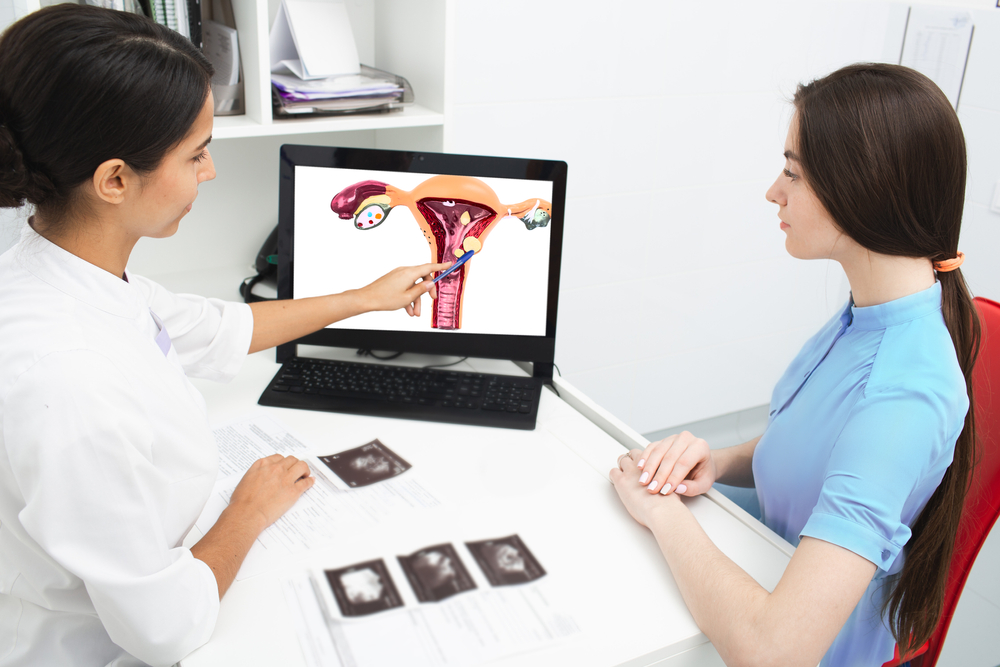Pros and Cons of Uterine Artery Embolization for Fibroids

A prevalent problem affecting women of reproductive age is uterine fibroid embolism. Many women might not have any symptoms, but those who might experience painful periods, aches, and other uncomfortable symptoms. Uterine artery embolization (UAE) is a remedy that has grown in favour lately. This minimally invasive surgery can reduce fibroids and possibly relieve the discomfort by obstructing the blood veins that supply the fibroids with blood. However, there are advantages and disadvantages to weigh before considering whether uterine artery embolization is the best course of therapy for you, just like with any medical operation. We'll examine the advantages and disadvantages of the UAE in this post and provide the details you need to make an informed choice.
Pros of Uterine Artery Embolization for fibroids
Uterine artery embolization (UAE) can be an effective treatment option for women with fibroids.
- One of the primary benefits of uterine artery embolization is that it can reduce the symptoms associated with fibroids, such as heavy bleeding, pelvic pain, and pressure. By blocking the blood supply to the fibroids, UAE can cause them to shrink and alleviate symptoms.
- In addition to its symptom-reducing benefits, UAE is a non-surgical and minimally invasive procedure. This means it can be performed without incisions in the abdomen or pelvis.
- Instead, a small catheter is inserted through a tiny incision in the groin and guided to the uterine arteries, where small particles are injected to block blood flow to the fibroids. Compared to traditional surgery, uterine artery embolization typically results in a shorter recovery and less pain.
- Another significant advantage of UAE is that it preserves the uterus and fertility. Unlike a hysterectomy, which involves removing the uterus, UAE leaves the uterus intact. This can be especially important for women who wish to have children in the future.
Cons of Uterine Artery Embolization for fibroids
While uterine artery embolization has several potential benefits, there are also some drawbacks.
- Uterine artery embolization is usually suitable for all types of fibroids except in some cases.
- Although UAE can effectively reduce symptoms and shrink fibroids, some women may require additional treatment in the future.
- Very rarely, uterine fibroids may regrow over time, and women may need additional procedures or treatments to manage their symptoms.
What to expect during a Uterine Artery Embolization procedure?
If you and your doctor decide that uterine artery embolization is the right treatment option for your fibroids, you may wonder what to expect during the procedure. Here's a summary of what normally occurs:
- Preparation: Before the procedure, you may undergo tests to ensure you're a good candidate for uterine artery embolization. This may include a pelvic exam, ultrasound, MRI, or other imaging tests. You might also need to fast for many hours prior to the surgery.
- Details of the procedure: Because uterine artery embolization is frequently outpatient, you won't have to spend the night in the hospital. To access the femoral artery, a tiny incision in your groin will be performed after administering a local anaesthetic to numb the area. Small particles will then be administered to limit blood supply to the fibroids through a catheter inserted through the artery and into the uterine arteries. The process typically takes one to two hours to finish.
- Recovery: You'll be observed for hours after the surgery to ensure no issues. After the procedure, you might suffer cramps, nausea, or vaginal bleeding for a few days, but these side effects should progressively disappear. Although you should refrain from heavy exercise and sexual activity for a few weeks, most women can return to work and routine activities in a week or two
Is uterine artery embolization the best course of treatment for you?
If you're considering UAE for fibroids, there are several factors to consider to determine if it's the right treatment option for you. Some factors to think about include the following:
- The size and location of your fibroids: Uterine artery embolization is typically most effective for fibroids less than 10 cm in size and located within the uterine wall, however even larger fibroids up to 20cm have been treated successfully. Your doctor may recommend a different treatment option if your fibroids are larger or outside the uterus.
- Your age and reproductive goals: If you're nearing menopause or don't plan to have children, Uterine artery embolization may be a good option. However, preserving fertility may be a priority if you want to have children in the future. Your doctor may recommend a different treatment option & customized plan for you.
- Your overall health: Your doctor will take your medical history into account when recommending treatment options.
Ultimately, the decision to undergo UAE for fibroids should be made in consultation with the Vascular Specialist and gynaecology department. They can help you weigh the pros and cons of UAE and other treatment options, consider your specific situation and medical history, and help make an informed decision that's right for you.
Conclusion
Uterine artery embolization can be an effective treatment option for women with fibroids, offering several potential benefits, such as reduced symptoms and shorter recovery time than surgery. However, it's important to weigh the pros and cons carefully and see a doctor if you experience fibroid symptoms like excessive monthly bleeding, pelvic pressure, or pain. Your doctor can assess whether UAE is a good option for you or whether other therapies could be more suitable. Remember that treatment and early detection can help manage symptoms and enhance the quality of life. Discuss your options with a Vascular specialist like Dr ABCD to determine if it's the right choice for you.






